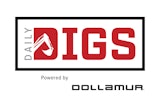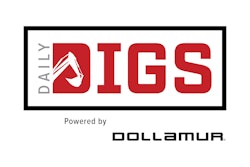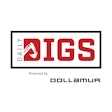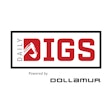![Vulpes Rec Center, Kimball, Minn. [Photo courtesy of Legacy Building Solutions]](https://img.athleticbusiness.com/files/base/abmedia/all/image/2021/06/ab.spotlight621_feat.png?auto=format%2Ccompress&q=70&w=400)
Indoor and outdoor spaces meshed as the COVID-19 pandemic necessitated everyone pay better attention to their surroundings. Fabric structure facilities had already been closing that gap in the sports world — allowing teams to keep some of their outdoor atmosphere while protecting themselves from the elements.
Several categories of fabric structures offer customers a variety of products for their project. Air-supported domes provide a removable solution that can transition a space between indoor and outdoor, while span structures and rigid-frame fabric buildings combine traditional building aspects with a flexible exterior.
"When we get a call, the first thing I think is important that we do is align with what the customer is thinking about when they think fabric structures," says Gregg Nelson, vice president of sales and marketing at Yeadon Domes. "They could be thinking a span structure, which is like Big Top and ClearSpan. That's one approach, sort of a fabric structure space over an athletic field. What we do is air-supported structures. There are key differences between the two."
Shannon Humbert of Legacy Building Solutions works the other end of the spectrum. "The biggest challenge for us is helping people understand that we're a permanent, rigid steel-frame structure. We tension fabric over a permanent, non-flex building. People really need to understand what this means. Is it a tent? Is it permanent? Is it something you have to inflate? Those things need to be put away immediately, because we're not that."
BeaverFit offers yet another iteration of the fabric structure — an insulated, relocatable shelter that can encompass anywhere from 400 to 40,000-plus square feet. Fabric structures like these and other customizable facilities have proved useful tools amid the pandemic, when teams across the United States have been forced to reconsider where, and how, they practice.
"We strive to educate customers on the advantages of engineered fabric structures," says Geoff Ching, director of sales at ClearSpan, which uses steel-beam frames to support its fabric-clad structures. "As we build more athletic facilities, the perception has changed from a lower-cost option to a superior indoor facility for athletic activity."
![Westwood Tennis Center, Los Angles [Photo courtesy of Legacy Building Solutions]](https://img.athleticbusiness.com/files/base/abmedia/all/image/2021/06/ab.spotlight621a.png?auto=format%2Ccompress&fit=max&q=70&w=400) Westwood Tennis Center, Los Angles [Photo courtesy of Legacy Building Solutions]
Westwood Tennis Center, Los Angles [Photo courtesy of Legacy Building Solutions]
Finding the right fit
"If I want to cover a field, what's right for me?" Nelson asks. "I never come out of the gate and tell everyone that an air-supported dome is the right thing for everyone.
"I want to work with a customer to learn. What are you after? What are your performance needs? What are your cost needs? Are we the right solution for you or is something else?"
Once the type of building is agreed upon, there are a number of ways a customer can customize their chosen facility. Ching says that ClearSpan, which also offers metal-clad structures, begins its consultative sales and design calls by clarifying how much space needs to be covered. Is it for a soccer field? Tennis courts?
"From there, we customize the design to dial-in the desired eave and peak height so play space is unlimited," Ching says. "If there is the desire for restroom, locker room or office spaces, ClearSpan can include modular solutions in those areas. And we offer multiple LED lighting packages and a range of heating and ventilation solutions to optimize climate."
"We're very customizable," Humbert says. "We don't have desirable lifts or heights that kind of make sense — if it needs to be 100 feet wide because that's what the facility calls for, then that's what we do. We're designing from a custom standpoint, not based on desirable lane lines and desirable engineering."
These conversations are typically happening with schools, clubs and organizations that are looking for a cost-effective solution to provide their athletes with a place to practice and play year-round.
Nelson says that Yeadon's customers fall into one of four groups: 1) colleges that don't have a $10 million-plus budget to spend on the facility; 2) school districts looking for a year-round space for their teams; 3) municipalities looking for a parks and recreation site; and 4) private entities that are seeing the demand for indoor fields and opening a facility they can monetize.
Tennis has been the most popular sport for indoor covers over the past 10 years.
"The buildings are getting big enough that we're definitely not going to get outpriced by a steel building," Humbert says of why fabric structures are common for tennis. "Our benefits start to play a big factor because lighting is important, acoustics are important, temperature control is important. So, now all of a sudden we're similar to a steel building but we've got all these benefits.
"It has kind of been a sweet spot for us because tennis folks are used to fabric buildings."
While tennis has been the most common, just about any sport can be housed in fabric if the demand is there. The expansion of technology, steel buildings and fabric-clad I-beam designs have allowed for the construction of 320-foot-wide facilities that can hold soccer, football and even baseball fields.
![Total Athlete Indoor Training Center, Triadelphia, W.V. [Photo by Brett Bodzinski, courtesy of ClearSpan]](https://img.athleticbusiness.com/files/base/abmedia/all/image/2021/06/ab.spotlight621b.png?auto=format%2Ccompress&fit=max&q=70&w=400) Total Athlete Indoor Training Center, Triadelphia, W.V. [Photo by Brett Bodzinski, courtesy of ClearSpan]
Total Athlete Indoor Training Center, Triadelphia, W.V. [Photo by Brett Bodzinski, courtesy of ClearSpan]
Ancillary benefits
Enhanced weather protection and budget-friendly construction costs are the longest-standing benefits of any fabric structure. The bigger the facility, the more the cost-savings aspect will come into play.
"If they're truly looking for a football facility or a turf facility, something that's going to be 200-plus feet wide and extremely high, it could save anywhere from $1 million to $5 million, depending on what the criteria is," Humbert says, referring to how fabric is less expensive to tension over a structure than traditional building materials. "It's more costly for traditional materials to go high on a roof pitch, and it's obviously more costly for them to try to span 400 feet.
"The bigger we get, the more we start to shine."
Yeadon's air-supported domes provide an even lower cost per square foot.
"Because we're using air, we can really span a huge field. We can go 300 feet wide by 500 or 600 feet long," Nelson says. "When you get bigger like that, and you're supporting that with beams or buildings, you just really increase the infrastructure significantly. As the desire for a covered field gets bigger, spanning that structure is way easier with air than with supports. And way more cost-effective."
Cost savings can bring athletic directors or facility operators to the table. However, additional benefits have become clear over the years, as fabric structure companies have continued to advance their offerings and these types of facilities have grown in popularity.
Outside of cost, ClearSpan promotes some of the advantages of its fabric-clad structures, including natural ventilation, abundant natural lighting and short construction timelines. Humbert says erecting a fabric structure facility takes one-third to one-half the amount of time as a steel building.
As with everything, the implementation time can be cut even shorter in the right circumstances.
"We typically say four or five months," Nelson says, noting that the timeline was ramped up for the construction of an air-supported dome last year at IMG Academy in Bradenton, Fla. "They were under contract with the WNBA to create a COVID bubble for their games down there. Suddenly they needed more space and, in about 50 days, they needed a dome.
"I did not think it was possible. That team down there and their general contractor said, 'No, we're not going to say it's not possible. We're just going to take the problems one at a time and try to solve them.' And with a lot of story to tell, the headline is we had a dome up, inflated and they were playing in it in 45 days. It was incredible."
Once a facility is in place, the airtight application of a fabric structure creates several benefits in operations. Humbert says that the white interior liner of Legacy's rigid-frame buildings allows for improved lighting and decreased glare, while the frame-to-frame fabric tension allows for improved energy efficiency. "We've started talking more about building things airtight so we can save energy," Humbert says. "We're going to really be a player in that because we're 160 percent more airtight than a steel building."
"There's no penetration in our fabric, other than where you might hang something or vent something," Humbert continues. "That interior liner acts as our vapor barrier. In essence, we almost have two vapor barriers, because we have our outside liner and our inside liner. The airtightness allows us to be more cost-effective when it comes to heating and cooling.
"We built a tennis facility in Minnesota. They have seven tennis courts. It can be 30 degrees below for a week straight, and they don't have forced air in there — all they have is two overhead heaters to get the chill out of the air. Once they get some heat in there, keeping it between 50 and 60 degrees is not difficult at all."
Acoustics are also improved in a more open, uniform facility that doesn't have as many exposed frames and hard surfaces to create vibration and echoes.
"In a fabric building, there's still going to be noise, but you can have eight different tennis lessons going on eight different tennis courts. There's noise, but it's not this reflection of echoing that you're dealing with," Humbert says. "Concerts and other things have been held in our building, and it's been a benefit that we probably didn't fully understand 10 years ago — how a liner system and the way we insulate is going to impact acoustics."
![Westwood Tennis Center, Los Angles [Photo courtesy of Legacy Building Solutions]](https://img.athleticbusiness.com/files/base/abmedia/all/image/2021/06/ab.spotlight621c.png?auto=format%2Ccompress&fit=max&q=70&w=400) Westwood Tennis Center, Los Angles [Photo courtesy of Legacy Building Solutions]
Westwood Tennis Center, Los Angles [Photo courtesy of Legacy Building Solutions]
Ease of maintenance
Fabric structures are also easy to maintain.
"Maintenance gets lost a lot of times," Humbert says. "It's a flexible outside exterior, so if people run into it — if a ball runs into it — if someone mowing grass runs into it, most likely it's going to flex and have no damage. Same thing inside.
"You have a lower maintenance when it comes to cleaning. Most of our customers, when I ask them what they have been doing, sheepishly say nothing. We would say maybe a light power wash, because dust and things might collect on the outside of the building. If it's a colored fabric on the outside, it's very unlikely you'll have to do anything from a cleaning standpoint."
If something does break through the fabric, it can typically be salvaged fairly easily.
"A customer called and said they hit the side of the building with a snow blower and had a 10-inch gash, and it basically was a $35 patch kit," Humbert says. "It was down low at the bottom of the building, it was the outside fabric, so basically like putting a patch on an inner tube. It was a pretty easy fix and not very costly at all. If it's larger damage, we would send a crew out and heat weld that area again with a different piece of fabric.
"You can do that with an electric process or heat. Once you weld or meld those pieces, it becomes one piece, similar to how we weld steel."
ClearSpan offers a 30-year warranty on some of its products, with a life expectancy as long as a conventional structure.
"Engineering-wise, we're not fighting an uphill battle," Humbert says. "The engineering's been used in all climates and all parts of the globe. The building is going to meet whatever Mother Nature throws at it."
RELATED: Find more solutions for your facility in the Buyers Guide
Beating the weather
Fabric structures are constructed with the weather in mind.
"There is no comparison to athletic activity inside a fabric structure," Ching says. "When the climate allows, we aim to design each fabric-clad athletic building to promote natural sunlight and airflow to add comfort to the large indoor space. ClearSpan indoor athletic facilities have a minimum roof pitch of 4:12, creating a cathedral feel inside that maximizes playing space and is superior to conventional buildings with lower roof slope. In colder climates, ClearSpan structures can also be insulated, allowing four-season climate control and optimization."
They are used in the northern United States to protect from cold and snow, while also becoming increasingly popular in warmer climates looking to protect athletes from heat and rain.
"I have to protect my players from the elements when there's an intense physical practice," Nelson says. "Whether that's a wet field, a snowy field or heat, there's a higher duty of safety. And weather is getting more and more unpredictable.
"The other thing with an air-supported dome you don't get in any other product is the seasonal flexibility. We have many domes across the country — a lot in Minnesota, Wisconsin, Illinois — where that dome is up in the winter, but then can come down and go into storage during the summer months. That does all kinds of things for the flexibility of the campus."
In order to handle the rain and snow load, fabric structures must pitch their roofs up in order to protect against precipitation pooling on the fabric. The level of pitch in areas with frequent snow typically rises 4 or 5 inches for every 12 inches of horizontal run. Drier locations can push the pitch down to 3:12 or 2:12. Fabric structures also use heat and pressure to mitigate the effects of snow.
"On a flat roof, if your snow accumulation gets too heavy, you have to get up there and move snow. When a dome is managed right, it sheds snow and doesn't accumulate that snow load," Nelson says. "You have to keep your temperature and pressure right when a storm's coming in. If you do that, they're a great product.
"A span structure building kind of sits in the middle of that equation and gives you the slope that sheds snow but at the same time gives you some of that structure to fight off a really nasty snowstorm."
RELATED: PRODUCT SPOTLIGHT 2021: Building Systems & Shade Structures
Increasing demand
Lower costs and operational benefits have combined with an explosion of club programs to lead to an increasing demand for fabric structures across all levels of athletics. Therefore, when an organization constructs a fabric structure, it is rarely earmarked for just one team.
"Regardless of whether it's our type of air dome or another type of facility, the colleges know that this demand is out there," Nelson says. "So they're going to use this for their teams, but they're also going to monetize it. They're going to sell some hours to local soccer clubs, and a lot of them will stay open until midnight serving adult league clubs that are willing to wait their turn."
Bringing outdoor sports under a roof also eases the job for athletic directors.
"If you talk to an AD and say, 'Give me a top-five list of things that drive you crazy in your job,' it's probably parents — number one — but at some point in that list you're going to get to scheduling," Nelson says. " 'We're trying to get in X number of practices, and I've got to schedule those on fields, keep the soccer team away from the football team, and then throw into that that a week of cold rain and nobody wanted to be on the field.'
"What if you could have your space covered so your schedules were weatherproof? Suddenly, a $2 million to $3 million dome project seems like a great idea. There's demand, I can monetize the space, I can create cash flow that offsets the price, and I've done a great service to my community and my teams by giving them a space that's kind of a guarantee — consistent and safe."
This article originally appeared in the June 2021 issue of Athletic Business with the title "Fabric structures offer sports facilities a variety of fits." Athletic Business is a free magazine for professionals in the athletic, fitness and recreation industry. Click here to subscribe.




































